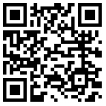
在像 Unix一样的操作系统中,chmod 命令设置文件或目录的权限。
查看英文版
1 chmod 运行系统环境
2 chmod 描述
3 chmod 语法
4 chmod 例子
Unix&Linux
在一个与Unix 一样运行的操作系统上,一组与每个文件关联的标志决定了谁可以访问该文件,以及他们如何访问该文件。这些标志称为文件权限或模式,如在"访问模式"中。命令名称chmod代表"更改模式"。它限制文件的访问权限。
有关文件模式的详细信息,请参阅什么是文件权限,以及它们是如何工作的?它包含如何定义和指定文件权限的全面说明。
通常,chmod命令采取以下形式:
chmod options permissions file name
如果未指定任何选项,chmod将文件名指定的文件的权限修改为权限指定的权限。
权限定义文件所有者("用户")、拥有该文件的组成员("组")和其他人("其他人")的权限。有两种方法来表示这些权限:使用符号(字母数字字符)或八进制数字(数字0到7)。
假设您是名为myfile的文件的所有者,并且要设置其权限,以便:
此命令将执行以下操作:
chmod u=rwx,g=rx,o=r myfile
此示例使用符号权限表示法。字母u, g和o代表 "user", "group" 和 "other".等号("=")表示"设置权限完全相同",字母"r"、"w"和"x"分别代表"读取"、"写入"和"执行"。逗号分隔不同的权限类,它们之间没有空格。
下面是使用八进制权限表示法的等效命令:
chmod 754 myfile
这里的数字7、5和4分别按此顺序表示用户、组和其他人的权限。 每个数字都是数字4、2、1和 0 的组合:
因此,7是权限 4+2=1(读取、写入和执行)的组合,5是4=0=1(读取、无写入和执行),4是4=0=0(读取、无写入和未执行)。
查看英文版
chmod [OPTION]... MODE[,MODE]... FILE... chmod [OPTION]... OCTAL-MODE FILE... chmod [OPTION]... --reference=RFILE FILE...
选项
|
-c, --changes |
如 --verbose ,但仅在实际进行更改时才提供详细输出。 |
|
-f, --silent,--quiet |
安静模式;禁止显示大多数错误消息。 |
|
-v, --verbose |
详细模式;输出每个处理文件的诊断消息。 |
|
- - no-preserve-root |
不要以任何特殊方式处理'/' (根目录),这是默认设置。 |
|
-- preserve-root |
请勿在\/ '上递归操作。 |
|
- - reference =RFILE |
设置权限以匹配文件RFILE 的权限,忽略任何指定的模式。 |
|
-R , --recursive |
递归式地更改文件和目录。 |
|
- - help |
显示帮助消息并退出。 |
|
- - version |
输出版本信息并退出。 |
技术描述
chmod根据MODE更改每个指定FILE的文件模式,它可以是要更改的符号表示形式,也可以是表示新模式位位位的八进制数字。
符号模式的格式为:
[ugoa...][[+-=][perms...]...]
其中perms是来自集r、w、x、X、s和 t的零个或多个字母,或来自集u、g和o的单个字母。可以给出多种符号模式,用逗号分隔。
字母u、g 、o和控件的组合将更改用户对文件的访问权限:拥有该文件的用户(u)、文件组(g)、不在文件组(o)中的其他用户或所有用户(a)。 如果未给出这些,则效果就像给定的一样,但在umask 中设置的位不受影响。
运算符=导致将选定的文件模式位添加到每个文件的现有文件模式位;-导致删除它们;和 =导致添加它们并导致删除未提及的位,但目录的未提及集用户和组 ID 位不受影响。
字母r, w, x, X, s和t为受影响的用户选择文件模式位: 读取 (r), 写入 (w), 执行 (x), 仅在文件是目录或已具有某些用户(X)执行权限时执行 , 设置用户或组 ID 执行(s),限制删除标志或粘滞位(t).对于目录,执行选项X和X定义查看目录内容的权限。
您可以完全指定其中一个字母u、g或o:授予拥有文件的用户的权限(u)、授予文件组(g)成员的其他用户的权限,以及授予前两个类别中两个类别(o)的用户的权限。
数值模式是从 1 到 4 个八进制数字(0-7),通过将值4、2和 1的位加起来来派生。省略的数字假定为前导零。第一个数字选择设置的用户 ID (4) 和设置组 ID (2) 和受限删除或粘滞 (1) 属性。第二个数字为拥有读取(4)、写入 (2)和执行 ( 1 ) 的用户选择权限。第三个选择文件组中其他用户的权限,其值相同;第四个用于不在文件组中的其他用户,其值相同。
chmod从不更改符号链接的权限;chmod系统调用无法更改其权限。但是,这不是问题,因为从不使用符号链接的权限。但是,对于命令行上列出的每个符号链接,chmod将更改指向文件的权限。相反,chmod忽略递归目录遍历过程中遇到的符号链接。
设置和设置位
如果文件的组 ID 与用户的有效组 ID 或用户的补充组 ID 之一不匹配,则chmod将清除常规文件的设置组 ID 位,除非用户具有适当的权限。其他限制可能会导致忽略MODE 或 RFILE的设置用户ID和设置组 ID位。此行为取决于基础chmod系统调用的政策和功能。如果有疑问,请检查基础系统行为。
chmod保留目录的集用户 ID 和设置组 ID 位,除非您显式指定其他位。您可以使用 u+s 和g-s 等符号模式设置或清除位,并且可以使用数字模式设置(但不清楚)位。
受限删除标志(或"粘性位")
受限删除标志或粘滞位是单个位,其解释取决于文件类型。对于目录,它可防止非特权用户删除或重命名目录中的文件,除非他们拥有该文件或目录;这称为目录的受限删除标志,通常在/tmp等可写世界目录上找到。对于某些较旧系统上的常规文件,该位将程序的文本图像保存在交换设备上,以便运行时加载得更快;这称为粘性位。
查看文件的权限
列出文件权限的快速和简单的方法是ls命令的长列表 (-l) 选项。例如,若要查看文件.txt,可以使用以下命令:
ls -l file.txt
...显示如下所示的输出:
-rwxrw-r-- 1 hope hopestaff 123 Feb 03 15:36 file.txt
以下是此信息的每个部分的含义:
|
- |
第一个字符表示文件类型:"-"对于常规文件,"d"表示目录,"l"表示符号链接。 |
|
rwx |
接下来的三个字符表示文件所有者的权限:在这种情况下,所有者可以从或x到或从或 x 执行文件。 |
|
rw - |
接下来的三个字符表示文件组成员的权限。在这种情况下,文件拥有组的任何成员可能从或w仪式到文件。最后的破折号是占位符;组成员没有执行此文件的权限。 |
|
r - |
"其他人"(其他人)的权限。其他人可能只 read 此文件。 |
|
1 |
指向此文件的硬链接数。 |
|
hope |
文件的所有者。 |
|
hopestaff |
文件所属的组。 |
|
123 |
文件的大小在块中。 |
|
Feb 03 15:36 |
文件的 mtime(上次修改文件的日期和时间)。 |
|
file.txt |
文件的名称。 |
查看英文版
chmod 644 file.htm
将文件的权限.htm"所有者可以读取和写入;组只能读取;其他人只能读"。
chmod -R 755 myfiles
递归 (-R) 将目录 myfile 及其包含的所有文件夹和文件的权限更改为模式755:用户可以读取、写入和执行;组成员和其他用户可以读取和执行,但不能写入。
chmod u=rw example.jpg
更改示例所有者的权限.jpg所有者可以读取和写入文件。不要更改组或其他组的权限。
chmod u+s comphope.txt
设置"设置-用户-ID"位.txt,以便任何尝试访问该文件的人这样做,如果他们是文件的所有者。
chmod u-s comphope.txt
与上述命令相反;取消设置 SUID 位。
chmod 755 file.cgi
将文件权限设置为.cgi所有者读取、写入和执行"和"由组和其他人读取和执行"。
chmod 666 file.txt
将文件权限设置为.txt"由所有人读取和写入"。
chmod a=rw file.txt
使用符号表示法完成与上述命令相同的操作。
查看英文版
cut | cu | csplit | crontab | cpio | continue | compress | col | cmp | cksum | chsh | chroot | chkey | cd | cp | comm | chown | cal | calendar | clear | chfn | cancel | cat | cc | cfdisk | checkeq | checknr | chgrp |
未知的网友